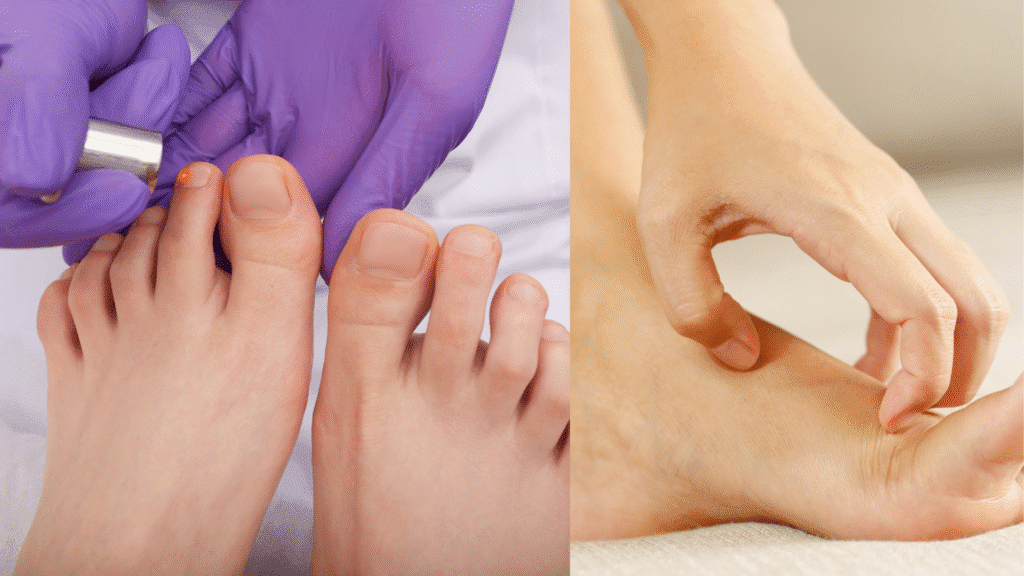
The rainy season brings with it a refreshing change in weather—but also a surge in skin problems, especially fungal infections. Increased humidity, wet clothes, and sweaty skin create the perfect environment for fungal growth. At Skinheal Solutions, we see a sharp rise in patients suffering from ringworm, athlete’s foot, and other fungal infections during monsoon.
In this blog, we’ll explain what causes fungal infections in the rainy season and how you can prevent and treat them effectively.
What Causes Fungal Infections During Monsoon?
Fungi thrive in warm, moist environments. The rainy season creates the ideal conditions for them to multiply, especially on your skin. Common causes include:
Prolonged dampness: Staying in wet clothes or shoes for too long
Sweating: Excessive sweating in humid weather, especially in body folds
Poor hygiene: Not drying properly after showers or rain exposure
Sharing personal items: Towels, razors, shoes, or clothing
Weak immunity: People with diabetes, obesity, or weakened immune systems are more prone
Common Fungal Infections in Monsoon
Ringworm (Tinea Corporis): Circular, itchy patches on arms, legs, back, or neck
Athlete’s Foot (Tinea Pedis): Itchy, scaly rash between toes or on soles
Candidiasis: Infection in moist areas like underarms, groin, or under breasts
Fungal Nail Infection (Onychomycosis): Thick, discolored, brittle nails
Tinea Cruris (Jock Itch): Red, itchy rash in groin area
Prevention Tips from Dermatologists at Skinheal Solutions
Wear Loose, Breathable Clothing – Cotton helps absorb sweat and keeps skin dry
Keep Feet Dry – Change wet socks or shoes immediately
Use Antifungal Soap or Powder – Especially in body folds and between toes
Bathe Daily and Dry Properly – Especially after getting wet in the rain
Avoid Sharing Towels or Footwear – Fungal infections spread easily through personal items
Eat a Balanced Diet – Boost immunity with fruits, vegetables, and probiotics
Best Treatments for Fungal Infections
At Skinheal Solutions, we offer customized treatments depending on the infection type and severity. Common options include:
Topical Antifungal Creams – Clotrimazole, Terbinafine, Miconazole, etc.
Oral Antifungal Medications – For severe or recurring infections
Medicated Powders or Soaps – To keep skin dry and infection-free
Laser Therapy – For stubborn or chronic fungal nail infections
Note: Never self-medicate. Improper use of steroid creams can worsen fungal infections and cause side effects.
When to Visit a Skin Specialist
If you notice symptoms like itching, redness, burning, scaling, or if your infection is spreading or recurring, it’s time to consult a dermatologist.
At Skinheal Solutions, we treat fungal infections safely and effectively with evidence-based care and personalized plans.
Final Thoughts
Monsoon skin problems can be frustrating—but they are preventable and treatable with the right care. Stay dry, practice good hygiene, and don’t ignore early symptoms. For expert guidance and quick relief, book your consultation with Skinheal Solutions today.

 Note: Never self-medicate. Improper use of steroid creams can worsen fungal infections and cause side effects.
Note: Never self-medicate. Improper use of steroid creams can worsen fungal infections and cause side effects.